FactGrid began in 2018 with the input of Hermann Schüttler’s list of 1,351 (verified and unverified) members of the Illuminati, our Items Q25 to Q1376.
Items Q249748 to Q250919 widen that list with an interesting overlap of 111 names with the members of the Strict Observance. It was the largest and most widespread Freemasonic umbrella organization in Europe, that imploded with a massive impact on the world of Freemasonry in 1782, the same year when the Illuminati began their three years of rapid growth before they imploded in turn from 1786-87 and ceased to exist altogether by August 1788.
The Strict Observance had, in hindsight a longer life, beginning in either 1751 or 1764, depending on how we define their beginning. In a way the Order has not disappeared altogether. It lives on in an augmented form within Sweden’s branch of national Freemasonry, the Swedish Rite. Swedish Masons affiliated with the Strict Observance only in 1778 at the convention of Wolfenbüttel with the election of Duke Carl of Södermanland (later King Carl XIII of Sweden) as Grandmaster, after the death of their founder Baron von Hund in 1776. The Swedish Masons then withdrew in 1780 and created their own IXth Province of the Order, having constructed their own distinct form of Freemasonry on top of the superstructure of the Strict Observance rituals. Retaining ritual elements from the earlier degrees of Carl Friedrich Eckleff, Duke Carl revised the Strict Observance rituals and constructed additional degrees, giving his new system its own distinct national flavour of Freemasonry.
The Rite of Strict Observance, also known as the Order of the Temple, was the most influential 18th century Masonic system in Germany and possibly on the European continent. It was the first Masonic system to transition fully into a secret society, complete with Order Name alias for the members, and an inner and outer order being led by “unknown superiors”. For their correspondence there were multiple complex ciphers, along with substituted geographical names for cities and their own calendar system. These Masons were said to possess the true secrets of Freemasonry and according to their liturgy, claimed to directly descend from the Knights Templar in an unbroken chain of successive Grandmasters. Though this legend was ultimately proved to be spurious, resulting in the colossal collapse of the Order at the 1782 Wilhelmsbad convention, its brief period as the original and dominant German Masonic system forever changed the development of Freemasonry in Germany and its surrounding countries. From its ashes emerged the Zinnendorf Rite, the Swedish Rite, the Chevaliers Bienfaisants du la Cité Sainte, and the Order of the Illuminati. It claimed some of the most influential members of society, along with Kings, Princes, and members of the nobility. A majority of these members continued their journey in Freemasonry after its demise, joining the ranks of the descendants of the Strict Observance. Now for the first time, a comprehensive and detailed member list of the Order has begun to emerge on FactGrid, and a clearer perspective of its legacy has begun to be manifested.
It is easy to add additional columns, e.g. on family ties, places of education, further membership statements and so on by modifying the SPARQL query with further requests. FactGrid’s Directory of Property states all the Properties that can generate additional columns in this data set. You can switch languages on the Query Service – all these data are available in English German and French.
The Strict Observance: Enlightened Masons as heirs of the Templars
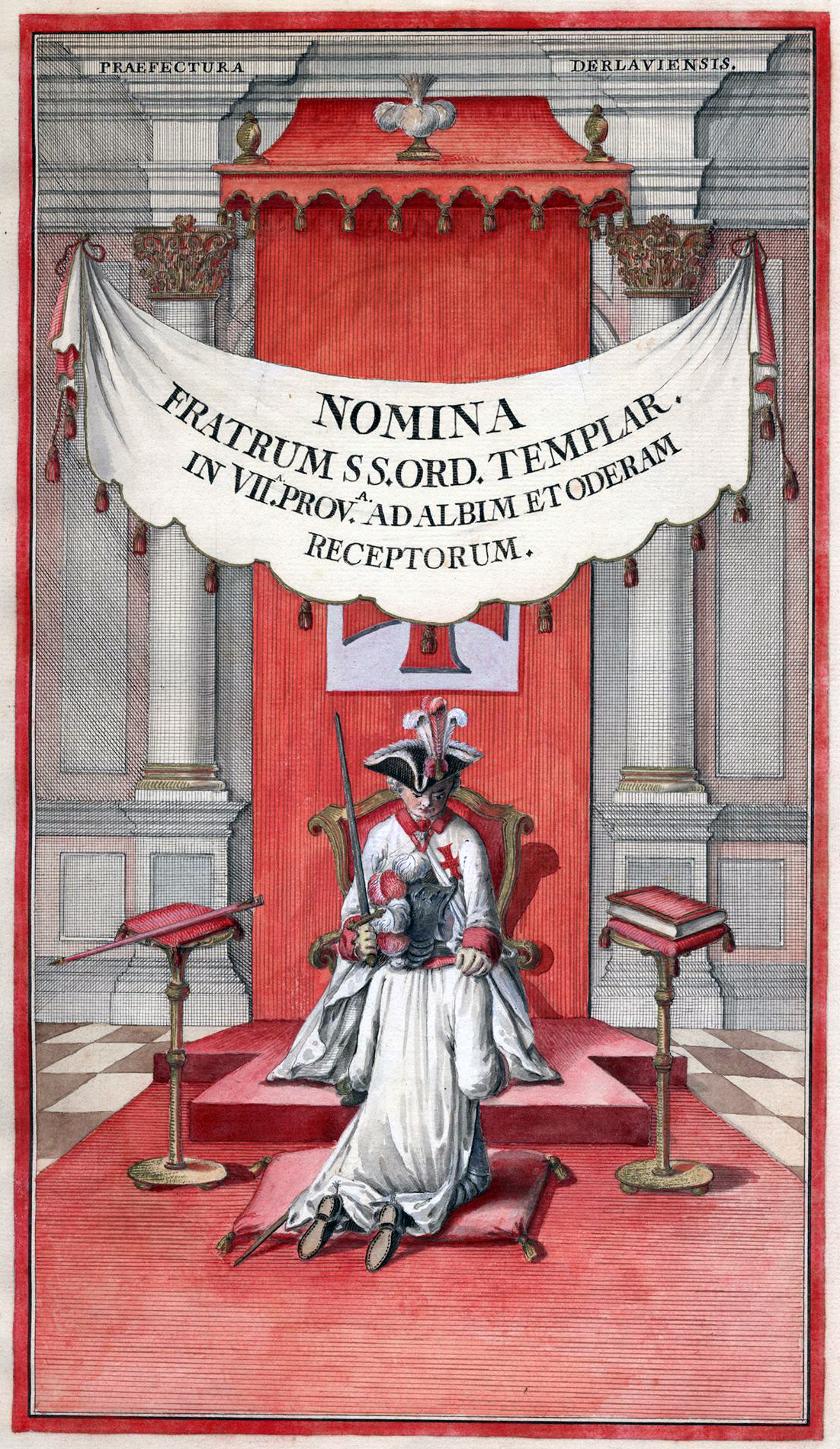
The history of Freemasonry is deeply intertwined into the history of the Enlightenment, and indeed the organization itself is purely a child of the century of light. This association founded on, and dedicated to, the principles of self-perfection, through a moral application of unique symbols and allegories, the equality of men, and self-governance under the divine guidance of deity, offered an attractive proposition to men of all stations in the 18th century. Merchant and Noble, all are recorded in the minuet books for posterity without distinction. The association is more than the sum of the moral precepts it imparts and is equally experiential, as it is fraternity bound by common initiation ceremonies. Each Masonic body therefore has its own unique variations in the ritual and these different flavours give its own distinct character. Freemasonry was exported from England to the continent of Europe in earnest in the 1720’s and by the middle 1730’s there were a handful of German Lodges.
Where did they come from, how were they connected within the world of Freemasonry?
Lodges in Germany primarily worked only the first three degrees of Freemasonry from 1736 through the early 1740’s. Many of the fragments that we have of these early rituals indicate that the first German language printing of Pritchard’s Masonry Dissected, had a profound impact on the origins of German ritual. The establishment of the Scottish Lodge l’Union annexed to the Berlin Lodge the Three Globes on 30 November 1742, and its chartering of daughter lodges in Germany and surrounding countries, meant that German Masons effectively had four Masonic degrees being offered, culminating at the Scots Master degree. This arrangement ran until the mid-1750’s and by the end of that decade, French high degrees began to appear during the Seven Years War and were combined and augmented into a set of high degrees called the Clermont Rite. The Strict Observance therefore is a revision to the existing tradition, with a new capitular superstructure at the helm.
The question of when precisely did the Strict Observance begin is a matter of perspective. Did the Order begin with Baron von Hund’s founding of the first Lodge in Unwürde in 1751 or is it later when the top two degrees containing the Templar liturgy and superstructure are constructed along with the Lodges uniting under this banner at the treaty of Altenberga in 1764?
What did they offer to members?
The Rite was constructed to attract the most wealthy and influential Freemasons. Expensive initiations and dues, elaborate costumes and regalia, rich ceremonies, and lavish conventions were tailored to whet the appetites of the most well to do members of society. It was a system of six-degrees and supposedly being led by Unknown Superiors. Additionally there was a financial charity scheme established much in the same vein as the charity scheme of the Premier Grand Lodge of England. Members could ask for assistance, and provided that their situation was not the result of bad housekeeping, they received a pecuniary contribution. Fraternal assistance was a particularly valuable proposition, in an age without social safety nets.
Who could become a member?
Theoretically anyone could be a member of the strict Observance, as there were no explicit provisions with respect to class, provided that a candidate was of the Christian faith. The liturgy in the ritual of the Rite is broadly constructed upon Christianity, and specifically upon the betrayal of Jacques de Molay and the restoration of the Templar Order. The issue of religion here is less of a concern with belief and more a concern of suitability. Practically speaking the initiation fees, regalia costs, dues etc., were of such a level that entry was excluded to at least the middle class and even there not without some considerable cost. This is visible in the professions of the members.
We could actually give career statements on almost all the members – the problem at this moment is the importation of the statements that remain in Swedish on the Labels of the Swedish members.
What rites did they perform?

The Strict Observance was effectively a revision and then an expansion of the existing German Masonic traditions. The first three symbolic degrees retain the so-called ancient landmarks making them acceptable with respect to regularity but differ, however, in key places in the ritual. There are technical changes and also insertions evident as well. The tracing boards of each degree differ from the standard rituals offered in other lodges at that time. The same is true for the Scots Master degree. These innovations in the ceremonies are unique to the Strict Observance, and are deliberate as it is these subtle differences, that build up the Templar legenda revealed later in the fifth and sixth degrees. Hund effectively built a Templar secret society, high degree system on top of the extant Masonic system. The initiate transitioned from being merely a Freemason and became a Knights Templar complete with an elaborate knighting and investiture ceremony. The Masonic degrees comprised the outer order and the Templar degrees comprised the inner order. Its these concepts that Knigge drew from when he set about building the degree system of the Illuminati from 1780-1784.
| Strict Observance | Illuminati |
| The Strict Observance does not have a Preparatory Order. | I. Minerval Class. Preparatory Order (non Masonic). 1. Novice. 2. Minerval. 3. Minervalis Illuminatus. |
| Outer Order.
St. Johns Lodge. St. Andrews Lodge. |
II. Freemasonic Class.
St. Johns. Lodge. St. Andrews Lodge. |
| Inner Order. (Capitular).
— 5° Secular Novice. |
III. Mysteries Class. Lesser Mysteries. — 1. Presbyter / Priest. — 2. Regent. |
| Greater Mysteries. — 1. Docetists. — 2. Philosophus. |
|
What was the internal structure?
Governance of the Strict Observance was organized at two levels; an administrative level and also at a local level. The Saint John’s Lodges offering the first through the third degrees were governed by the elected officers of the Lodge. Above this lodge was Saint Andrew’s Lodge administering the fourth degree, Scots Master, and governed by its own elected officers. Above this lodge was the Chapter, offering the Novice and Knight degrees, and administrating not only the Chapter, but also the whole local presence of the Strict Observance in each locality. Reports were constructed and a portion of the monies received were forwarded from the Treasurers and Secretaries of both St. John’s and St. Andrew’s Lodges to their counterparts in the Chapter. The Chapter abstracted these reports and forwarded its portion of the monies in conjunction and sent them the Prefecture. The Prefecture comprised of several chapters performs the same functions and reports to the Provincial Grand Master of the Province. Provinces are composed of several Prefectures and assembled roughly every few years at conventions to work out the business of the Order, and often to settle internal disputes.
Knigge again borrowed from his time in the Strict Observance as well, with respect to external structure. The main difference is that Minerval Assemblies, the Preparatory Order unique to the Illuminati is included at the local level and subordinate to the St. John’s Lodge. Knigge also made refinements at the Administrative level as well. Provinces were localized within states, whereas they had crossed these boundaries within the Strict Observance. Additionally Provinces in the Illuminati reported to the National Inspector and these Inspectors were to be united at conventions called National Inspections. None of this ever occurred however, as the Illuminati faded into obscurity as quickly as it had ascended.
| Strict Observance | Illuminati |
| Administrative Level. — Province. (Prv. Grand Master) — Prefecture (Prefect). |
Administrative Level. — National. (Regents)— Prefecture. (Priests) |
| Local Level. — Chapter. (5°, 6°) — St. Andrew’s Lodge. (4°)— St. Johns Lodge. (1°, 2°, 3°) |
Local Level — Chapter. (Priests) — St. Andrew’s Lodge. (Scottish Novices and Knights) — St. Johns Lodge. (1°, 2°, 3°) — Minerval Assemblies. (3°) |
Disintegration and Survival
The Strict Observance ceased to exist much in the same way it began; at a convention. From the Templar perspective the rite was born, chaotically at the convention of Altenberga in 1764, after a Gentleman named Leucht passed himself off as a Superior of the Templars named Johnson. Baron Karl Gotthelf von Hund assumed control after Johnson had appointed him Heermeister, suspecting him of fraud and had him imprisoned after he confessed to this deception. Hund assumed command of the Order though it was a risky venture.
Johnson sought to gain control by deception over all of the local lodges practicing the Clermont System of high degrees, a composite of French high degrees fortified with alchemy and theosophy. Exploiting the occult leaning tendencies of the local Lodges and using a sleight of hand involving the production of gold, he proceeded to organize a general convention in effort to alter their masonic system and place himself at its head. Johnson had the deputies of the local lodges bring their rituals and papers and had them burned while introducing his new ceremonies. This singular act, and subsequent variability in the receptions conferred immediately afterwards by Johnson and von Hund, quickly led to the 1764 Altenberga Convent, and the only order of business was to reform all of the Lodges and join them to the Order of the Temple. Standardization was the ultimate goal.
During the convention it was discovered that Johnson was a charlatan named Leucht, and he was ultimately arrested and imprisoned extrajudicially until his death in 1777. Baron von Hund found himself in a very precarious situation, and at stake was no less than the future of local Masonry, given that all of their records had just been immolated by a fraudster. Hund seized control and stabilised the situation. Johnson’s new rituals and economic plan were to be implemented despite his roguery, out of necessity.
Johann Schubart, a close associate of von Hund, was tasked with implementing this new reform on all of the Lodges with the assistance of J.J.C. Bode. Through Schubart, Hund used the conferral of these new degrees to gain favour over the brethren, and to assert himself as being the Heermeister or Chief of the Army. Key was the Lodges participation in the newly crafted financial scheme, the Plan ad Interim. This move was not without suspicion, however and many of the lodges altered or flatly refused participation.
Regular conventions were organized as a result. These conventions served partly to enact new policy and reforms, and partly to maintain control of a rapidly expanding system. In 1768 the so-called clerical Branch appeared and much to the chagrin of the Brethren, they were incorporated into the Order by Baron von Hund. The Clerical Brethren in fact practiced a different form of the high degrees with a bent towards the occult sciences, and this inexplicable act his called into question, in the minds of many precisely how was Baron von Hund initiated into the Order of the Temple?
At the convention of Brunswick in 1775, von Hund said that ‘he had been received into the Order in Paris in 1743 by a Superior, Bro. von der rothen Feder, in the presence of Lord Kilmarnock, and had then been introduced to the Pretender. On various occasions subsequently Bro. von der rothen Feder had asked Bro. ab Ense for certain sums of money for the American undertakings. Finally, however, Bro. ab Ense had grown tired of these demands and had terminated this correspondence. This episode will still be in the memory of most of the Right Worshipful Brethren of the Order, as will the story that when the Reverend Bro. ab Ense was asked to reveal more about the identity of Bro. von der rothen Feder he burst into tears and assured his questioners with the warmest emotion that ‘to do so would be against his oath and his conscience’ and that, if he revealed his identity completely, then ‘he would upset certain more worthy persons.’ Earlier that same year at the convention of Hamburg he with great difficulty presented a document in cipher which was supposed to be his patent of authority. Ultimately he only showed it to four brethren, none of which could decipher let alone read it.

Ultimately von Hund never revealed the identity of his initiator and took his secret with him to the grave in 1776, his fortunes greatly reduced through his support of the Order. This started the terminal decline of the Strict Observance. Only recently has his patent been deciphered, but sadly no new information has been gleaned from the transcript, as it is merely a recounting of his initiation by the so-called Knight of the Red Feather. In the subsequent convents after his death, Carl the Duke of Södermanland was proposed and elected Grand Master of the Order in 1778 at the convention of Wolfenbüttel, and only two years later resigned. Carl’s election was rejected by the Grand Lodge of the Three Globes in Berlin, who withdrew from the Order, and thus the unravelling began in earnest and culminated at the convention of Wilhelmsbad in 1782. At this convention the association with the Knights Templar was officially removed, and the French Brethren coalescing around the orbit of Jean Baptiste Willermoz officially proposed that the new reform ritual constructed by Willermoz in 1778 and being worked in France under the CBCS, be adopted as the official ritual. This proposition was rejected by the German Lodges, and the Strict Observance ceased to exist in precisely the same manner it came into existence; at a convention. It had become clear even in von Hund’s lifetime that there were never really any Unknown Superiors directing the Order, and this issue was amplified after his demise.
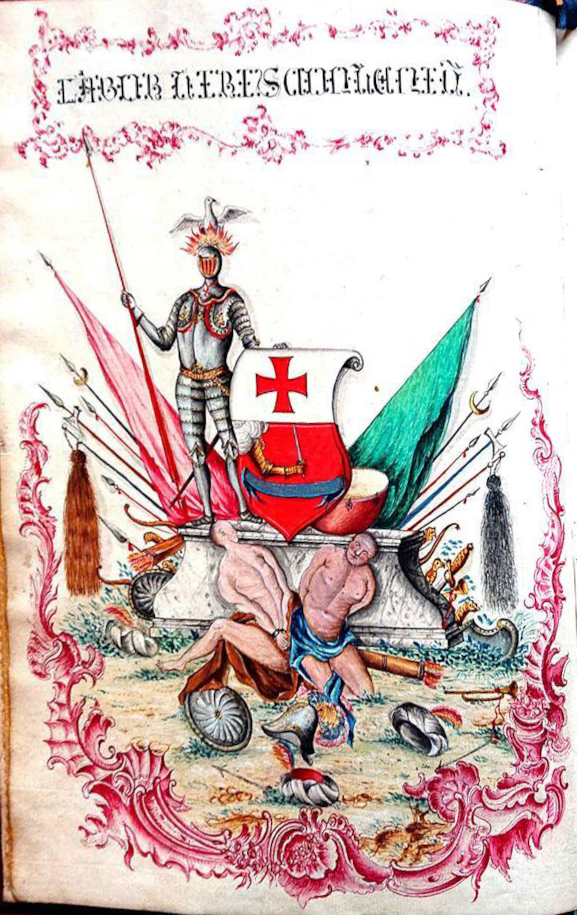
The death of the dominant Rite in Germany created a massive power vacuum, that was quickly filled by her daughter systems. The real legacy of the Strict Observance therefore is that it was the mother of several subsequent high degree systems, and its scope and influence forever changed Freemasonry in Europe.
Were the Illuminati a counter movement? The answer will, apparently, be a “yes and no”. The entire organization adopted structures, yet the Illuminati as represented by Knigge at the convention of Wilhelmsbad, made eventually a major acquisition of J. J. C. Bode who in turn with Knigge brought many members of the Strict Observance with them into the Illuminati. Ultimately the convention of Wilhelmsbad ended the Strict Observance while at the same time gave birth to the CBCS. The Illuminati were a counter movement of and the antithesis to the CBCS, and were in competition not only with them, but also with the Gold und Rosenkreutzer Orden for the members of the Strict Observance.
The present data set
The main source of the present input have been the 1,189 members of the Strict Observance listed in the 19th century – privately printed in 1846 by a Brother Berndt, composed by a Brother von Lindt, known as the Verzeichniss sämmtlicher inner Ordensbrüder der Strikten Observanz. These are the members of the “inner order” and from this perspective the most valuable and influential list possible.
The fusion of this list into FactGrid created a much larger data set of now 1,596 members – certainly without reaching the complete number. Hermann Schüttler had identified several new members, but the largest subset came here with the input of the 4,200 18th-century Swedish Freemasons which Andreas Önnerfors provided earlier in 2020.
The dynamic list is with all these inputs conclusive on the leadership level of the Strict Observance yet it will not fully account for the lower ranking members at the local levels, which will create the largest position of the membership. Over time these local records will be populated, and the overlaps to other organizations will grow more substantial.
We will now have to learn how to use these data. Von Lindt’s, Verzeichniss sämmtlicher inner Ordensbrüder der Strikten Observanz was a defined paper publication. One could run through its lists to identify a particular member with its internal name and localization, but the database does this job far better. Type in any of the internal names into the basic search field and you will be in the data set of the person who adopted this name. Our list is enriched with name variants in the aliases – you get the variants in the autocomplete when looking for a person’s data set.
At present, we are now handling information in a web of interconnected statements; the entries of all members including information on the provinces and the local affiliations. If you are ready to modify the following script, you get the listings for any prefecture you are interested in or run any other filter on the set like these two:
- All members of the Strict Observance born between 1740 and 1750
- All members of the Strict Observance linked to the prefecture Rittersfelde, i.e. Frankfurt am Main
You can just as well create a network graph to see all these members in their respective local networks:

The following searches gives you the list of the provinces with their respective prefectures – on a table and on the map – both lists are useful as they give the Item numbers or specified explorations of the prefectures and provinces
Many of the members have career statements on their personal records. The following bubble graph gives the full spectrums without further accumulation – not very practical as this gives a pattern of a load of variations. The statements are, however, part of a provisional classification, so that you can also sort them under a first classification – links two and three give this homogenized pattern in bubble and bar charts:
- All the career statements, bubble chart
- All the career statements, provisionally categorised, bubble chart
- All the career statements, provisionally categorised, bar chart
The representations remain problematic as they accumulate practically all the career statements made on all these persons over their respective lifetimes. It is not that easy to formulate a search that asks for everyone’s position in a year like 1780 – both the search and the data have to be prepared for such a representation.
Many of those listed have further membership statements on their items. It is easy to create a table of all these membership statements – and to convert this table into a bubble chart that shows the size of these overlaps.
- Members of the Strict Observance and their further memberships, table
- Organizational overlaps: All the other membership statements, bubble chart
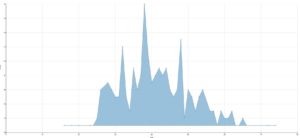
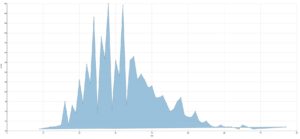
-
-
- The age profile is extremely interesting to evaluate organizations. The pattern has, if given by year of birth, its coincidental ups and downs; a moving average or a distribution by decades would straighten that; but it gives an idea of the outreach of the respective organisation. The Strict Observance was an organization for advanced Freemasons, for men between 35 and 65. The Illuminati wanted to educate and form their members; they were particularly eager to recruit students, and this is clearly visible in their far younger profile with its first peaks in the late 20s. Both graphs state the situations for the year 1782:
The biggest problem with data as we have them now is that the further categorization is lagging behind. It would be easy to give the medieval three estates of church, nobility and peasants – the 1780s are, however, no longer the era for such a simple pattern. Academics had gained a distinction; the nobility called for a far clearer differentiation between the ruling princes and lower ranks of all sorts. A huge group of citizens had grown over last 500 years and called for complex patterns. We would need social historians to categorize our the biographical datasets – no trivial task in a database that bridges through the centuries.
Designed to accumulate and aggregate data
The main advantage of the present data set is that it is now extremely open. You can download the set with any arrangement of statements you are interested in, as far as these statements are made on persons in the set – and here FactGrid has a wealth of unprecedented information on many of the members. All data are CC0, that is free to be used in any other environment, whether you want to publish such a list in book form or whether you want to run visualizations in software-environments of your choice.
The far more interesting use will be online and in the database. FactGrid is distributing accounts; the data sets presented with this post are open to be augmented and aggregated into any direction. One would love to have lists like these for all the masonic organizations that competed on the late 18th century market. It would be extremely interesting to understand the membership careers, the biographical movements on the constantly changing landscape of competing or well-connected associations.
-
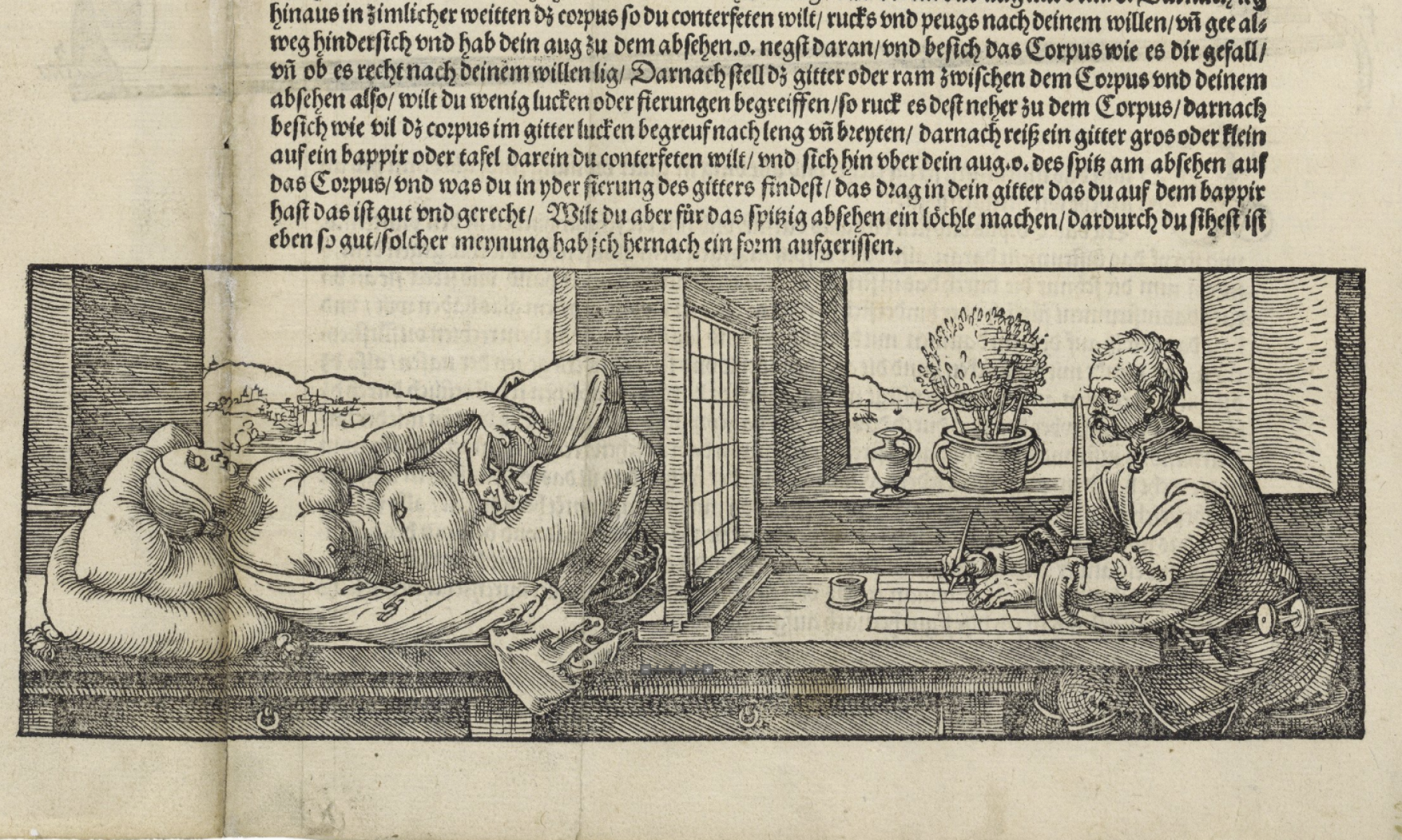

Thank you for sharing in depth the Rite of Strict Observance.